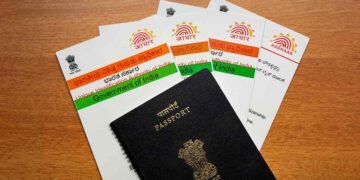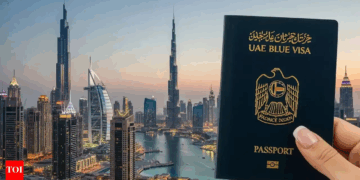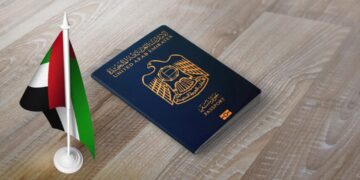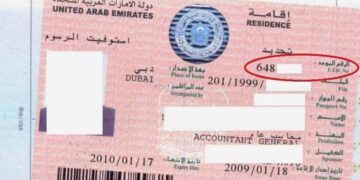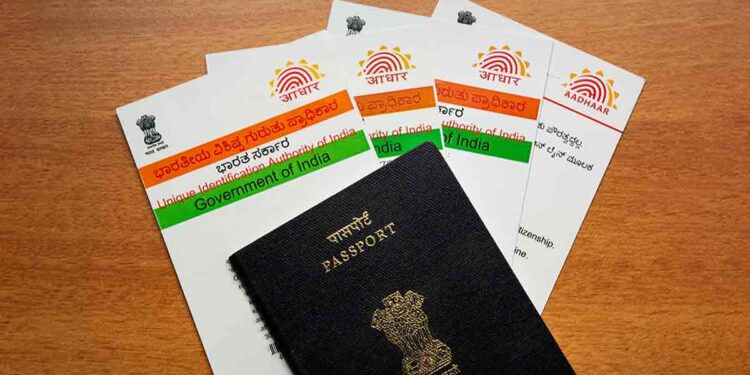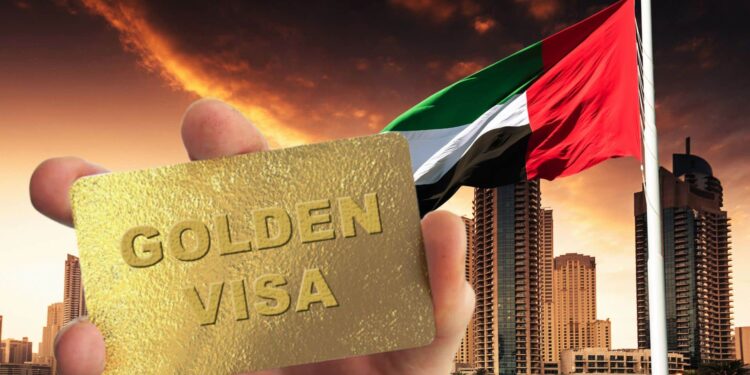Residing in Dubai but require an Aadhaar card for Indian services? Whether you need to obtain a mobile phone connection or open a bank account in India, the Aadhaar Identity card has become a crucial document for all Indians, including non-resident Indians (NRIs).
If you find yourself in the same situation and are looking to acquire your Aadhaar card while living in the UAE, you can conveniently arrange for it during your next visit to India. The application process is efficient, and once approved, the card will be promptly issued and delivered to your registered postal address.
Here is a step-by-step guide on how you can complete the process.
What is the Aadhaar card?
The Aadhaar number is a 12-digit unique identifier issued by the Unique Identification Authority of India (UIDAI). This card includes the individual’s name, address, date of birth, gender, photograph, unique Aadhaar number, and a QR code. It serves as a convenient tool for accessing government services through a streamlined, paperless registration process.
Can NRIs enroll for an Aadhar card?
According to the UIDAI website, Non-Resident Indians (NRIs), whether minors or adults, holding a valid Indian passport, are eligible to apply for an Aadhaar card at any enrolment centre.
To apply for your Aadhaar card, simply gather the required documents and visit the nearest Aadhaar enrolment center. You will need to provide your biometric data and personal information to complete the process. It is important to note that you must have an active mobile number issued in India, as the Aadhaar system does not currently support international mobile phone numbers. Updates on the status of your Aadhaar card will be sent to this same mobile number.
How can one find the nearest Aadhaar enrolment center?
There are tens of thousands of enrollment centers available throughout India. To locate the one nearest to you, please visit the website: https://bhuvan-app3.nrsc.gov.in/aadhaar/.
This website offers the geographical location of each of these centers, allowing you to search for the one closest to you by entering your city’s name, area pin code, or selecting your state.
Which documents do one need to carry?
Your passport is typically accepted as a valid form of identification, but there are situations where additional documentation may be required. For instance, if your current residential address is not listed on your passport, you can submit an alternative Proof of Address such as a water or electricity bill, or a property tax receipt.
Likewise, if you are applying for an Aadhaar card for your family, you may need to provide proof of relationship if your spouse’s name is not included on your passport.
In essence, you will need documents to prove your identity, address, date of birth, and relationship. The UIDAI website offers a comprehensive list of acceptable documents for these scenarios, which can be accessed here: https://uidai.gov.in/images/commdoc/List_of_Supporting_Document_for_Aadhaar_Enrolment_and_Update.pdf.
How to get an Aadhaar enrolment form?
The Aadhaar enrolment process varies for Non-Resident Indians (NRIs), so it is important to ensure that you are filling out the correct form, whether you choose to do so online or offline.
If you prefer to fill out the form in person, you can obtain a physical copy at the enrolment center. Just be sure to inform the officer that you require an NRI enrolment form.
Alternatively, you have the option to complete the form in advance by accessing it online through the UIDAI website at the following link: https://uidai.gov.in/images/resource/NRI_Aadhaar_Enrolment_23092019.pdf.
Visit the enrolment centre
When you arrive at the center, the enrollment operator will collect the following information from you to finalize the process:
– Required demographic information (name, date of birth, gender, address, and email)
– Optional demographic information (mobile number)
– Biometric information (photograph, 10 fingerprints, iris scan for both eyes)
– Type of documents provided (a valid Indian passport is necessary as Proof of Identity)
– Residential status.
Once the operator has inputted the information, carefully review all details on the screen (in English and the local language) before authorizing the submission.
Upon completion of the enrollment, the operator will return all documents to you along with an acknowledgment slip containing your 14-digit Enrollment ID and date and time stamp.
Applying for your family members
You can easily apply for an Aadhaar card for your family members using a similar process. For your spouse, you can provide your passport if their name is included on it. This document can also serve as proof of address for them.
When it comes to children under the age of five, one parent or guardian must authenticate the enrollment on behalf of the child and provide consent by signing the enrollment form. A valid Indian passport is required as proof of identity.
If your child resides in India, a valid proof of relationship document such as a birth certificate, along with your Aadhaar card, can be used for enrollment.
For children between the ages of five and 18, one parent or guardian must provide consent by signing the enrollment form. If your child is a non-resident Indian (NRI), a valid Indian passport is necessary as proof of identity. If they live in India, a valid proof of identity and proof of address document, such as a school ID card, can be submitted. If these documents are not available, a valid proof of relationship document like a birth certificate can be used to enroll them under your file as the ‘Head of the family.’
How will one get the Aadhaar card?
After completing the enrollment process, you can easily check the status of your Aadhaar card by using the 14-digit Enrollment ID on the official website: https://resident.uidai.gov.in/check-aadhaar
As per the UIDAI website, the generation of Aadhaar may take up to 90 days from the date of enrollment. The Aadhaar letter will be delivered via ordinary post to the registered address of the Aadhaar Number holder.
Also Read: Stay safe at intersections and avoid fines with this UAE traffic light guide
